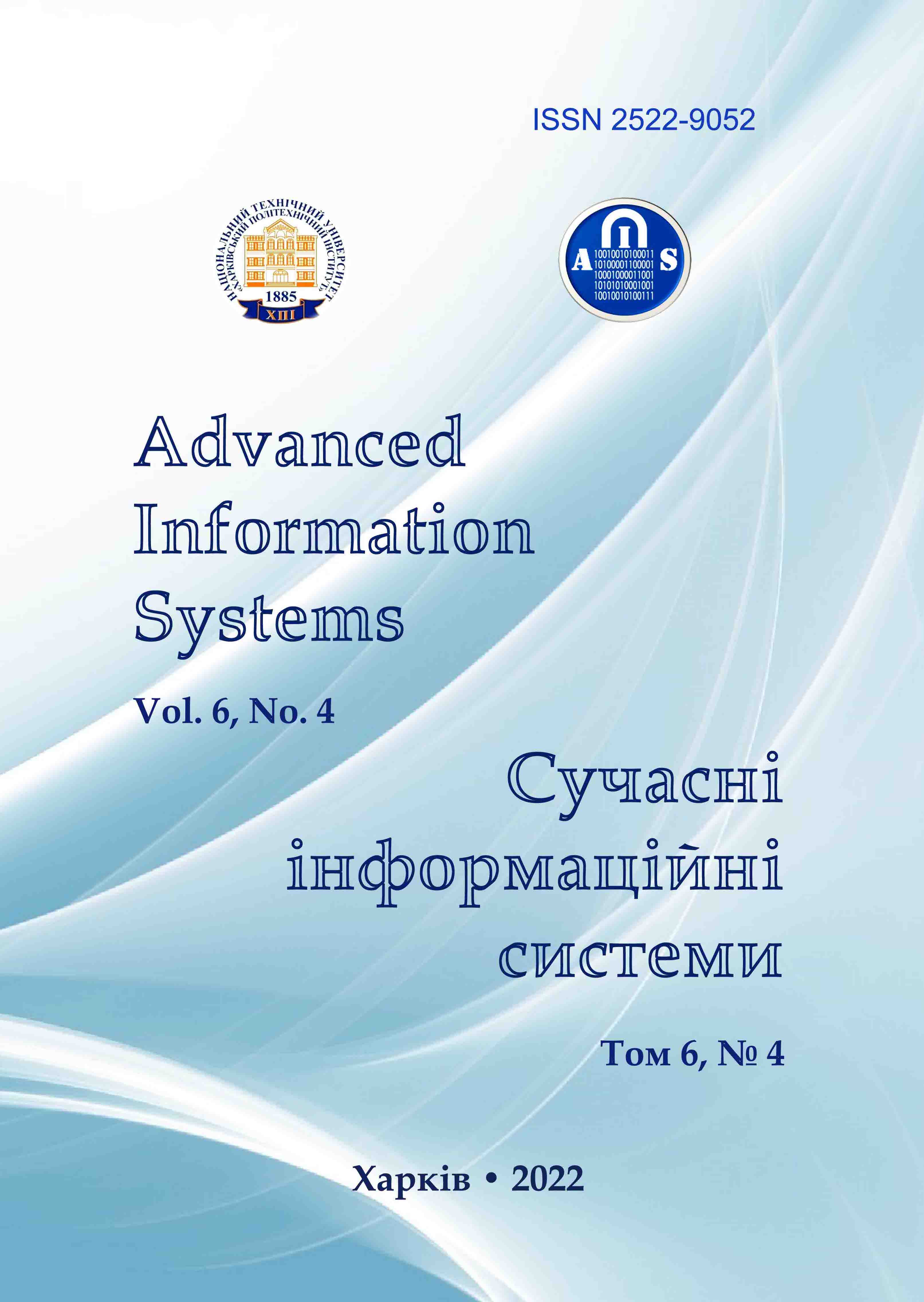MATHEMATICAL MODEL OF COMPUTER SYSTEM RELIABILITY IN RESIDUAL CLASSES
Main Article Content
Abstract
The subject of the article is the construction of a mathematical model of the reliability of a computer system (CS) that operates in a system of residual classes (RNS). This mathematical model is based on the use of structural sliding reservation. The purpose of the article is to increase the reliability of the CS, which operates in the system of residual classes, as well as to calculate and compare the reliability, in terms of the probability of failure-free operation, of the CS in the RNS and the ternary computing system, which operates in the positional binary number system (PBNS). Tasks: to analyze the influence of the number system used on the reliability of the CS; to investigate the properties of the RNS and determine their influence on the structure of the CS in the RNS; build a mathematical model of reliability and, on its basis, perform the calculation and comparative analysis of the reliability of the CS in the RNS and the tripled CS in the PBNS. Research methods: methods of analysis and synthesis of computer systems, number theory, coding theory in RNS, reliability theory. The following results are obtained. The paper shows that the provision of a given level of reliability in the design of the CS using the RNS is due to the presence of various types of redundancy at the same time: structural, informational, temporal, functional and load. In RNS, these types of redundancy can be effectively used to improve the reliability of the CS. The CS in the RNS represents a computational structure that is identical in structure and principle of operation to the sliding structural redundancy model in the PBNS in the case of a loaded (hot) mode of operation of the redundant elements. Proceeding from this, the paper presents a mathematical model of the reliability of the CS in the RNS. In this paper, the calculation and comparative analysis of the reliability of a tripled computing structure in a PBNS with an ideal majority element and a CS in an RNS with an ideal reliability automaton are carried out. Conclusions. As shown by the results of calculations and comparative analysis in some time intervals of operation, the probability of non-failure operation of the CS in the RNS is higher than the probability of non-failure operation of the aircraft in the PBNS with a tripled majority structure. This implies the effective use of the RNS to improve the reliability of the CS.
Article Details
References
Ananda Mohan (2016), Residue Number Systems, Birkhäuser Basel, 351 p.
Patterson, D. A., Hennessy, J. L. (2016), Computer Organization and Design: The Hardware Software Interface: ARM Edition. [The Morgan Kaufmann Series in Computer Architecture and Design] 1st Edition: Morgan Kaufmann, 720 p.
Kasianchuk, M., Yakymenko, I., Pazdriy, I. and Zastavnyy, O. (2015), "Algorithms of findings of perfect shape modules of remaining classes system," The Experience of Designing and Application of CAD Systems in Microelectronics, Lviv, pp. 316–318, doi: https://doi.org/10.1109/CADSM.2015.7230866.
Yatskiv, V., Tsavolyk, T. and Yatskiv, N. (2017), "The correcting codes formation method based on the residue number system," 14th International Conference The Experience of Designing and Application of CAD Systems in Microelectronics (CADSM), pp. 237-240, doi: https://doi.org/10.1109/CADSM.2017.7916124.
Krasnobaev, V., Kuznetsov, A., Kiian A. and Kuznetsova, K. (2021), "Fault Tolerance Computer System Structures Functioning in Residue Classes," 11th IEEE Int. Conference on Intelligent Data Acquisition and Advanced Computing Systems: Technology and Applications (IDAACS), pp. 471-474. doi: https://doi.org/10.1109/IDAACS53288.2021.9660919.
Kong, Y. and Hossain, M. S. (2018), "FPGA Implementation of Modular Multiplier in Residue Number System," IEEE International Conference on Internet of Things and Intelligence System (IOTAIS), pp. 137-140. doi: https://doi.org/10.1109/IOTAIS.2018.8600881.
Navardi, M., Ranjbar, B., Rohbani, N., Ejlali A., and Kumar, A. (2022), "Peak-Power Aware Life-Time Reliability Improvement in Fault-Tolerant Mixed-Criticality Systems," in IEEE Open Journal of Circuits and Systems, vol. 3, pp. 199-215. doi: https://doi.org/10.1109/OJCAS.2022.3207598.
Krasnobaev, V., Kuznetsov, A., Popenko, V. and Kuznetsova, T., (2021), "Mathematical Model of the Reliability of a Computer System which is Functioning in the Residual Class System, Taking into Account the Reliability of Switching Devices," IEEE 4th International Conference on Advanced Information and Communication Technologies (AICT), pp. 225-229, doi: https://doi.org/10.1109/AICT52120.2021.9628929.
Krasnobayev, V. A., Koshman, S. A. and Mavrina, M. A. (2014), "A method for increasing the reliability of verification of data represented in a residue number system", Cybernetics and Systems Analysis, vol. 50, Issue 6, pp. 969-976.
Moroz, S. A. and Krasnobayev, V. A. (2011), “A data verification method in a non-positional residue number system”, Control, Navigation, and Communication Systems No. 2(18), pp. 134–138.
Yadin, A. (2016), Computer Systems Architecture. CRC Press, 526 p.
Valvano, J. (2017), "Embedded Systems: Real-Time Operating Systems for Arm Cortex M Microcontrollers [2nd ed. edition]", CreateSpace Independent Publishing Platform, 486 p.
Krasnobayev, V. A., Kuznetsov, A. A., Koshman, S. A., and Kuznetsova, K. O. (2020), "A method for implementing the operation of modulo addition of the residues of two numbers in the residue number system", Cybernetics and Systems Analysis, Vol. 56, No. 6, pp. 1029-1038. https://doi.org/10.1007/s10559-020-00323-9.
